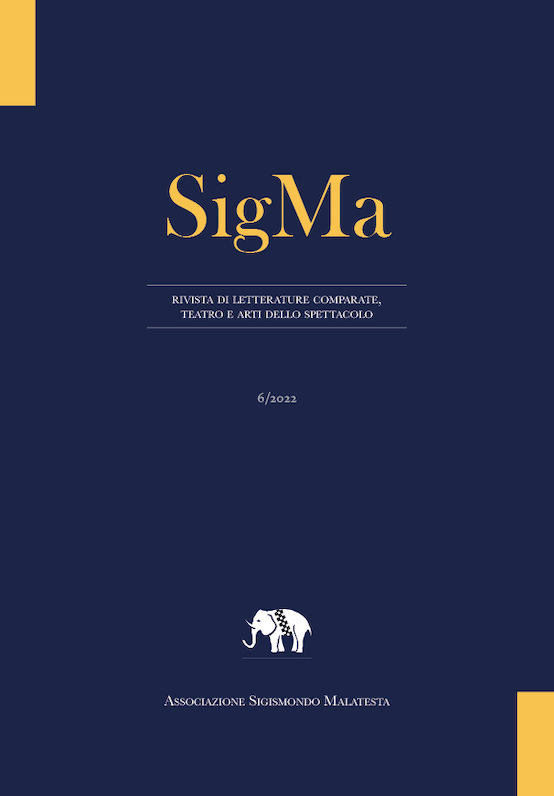Raccontare un abito bianco: l’iconografia della sposa, tra sacro e profano, a partire da Pippa Bacca
Abstract
Scopo del presente contributo è quello di riflettere sui significati religiosi e secolarizzati dell’iconografia della sposa a partire dalla performance Sposa in viaggio di Pippa Bacca, che si svolse nel 2008 e che si concluse, tragicamente, con la morte dell’artista. L’articolo si concentrerà meno sulla performance in quanto tale, e più sui racconti, narrativi e audiovisi, che ne sono stati fatti successivamente all’interno del contesto italiano e francese: da un lato, la biografia/memoir di Giulia Morello Sono innamorata di Pippa Bacca, chiedimi perché! (2015) e il documentario di Simone Manetti Sono innamorato di Pippa Bacca (2019); dall’altro il docufilm di Joël Curtz La mariée (2012) e il romanzo, a cavallo tra autofiction e saggio, di Natahlie Léger La robe blanche (2018). Attraverso un’analisi che prenderà in considerazione i rapporti tra parola e immagine, si cercherà di rintracciare la metamorfosi che l’abito bianco subisce all’interno di vari passaggi tra sfere culturali e mediali differenti, tra iconografia del sacro e secolarizzazione in chiave femminile.
Downloads
SigMa pubblica in internet, ad accesso aperto, con licenza:
|
|
CCPL Creative Commons Attribuzione |
L'autore conserva il copyright sul suo contributo, consentendo tuttavia a chiunque "di riprodurre, distribuire, comunicare al pubblico, esporre in pubblico, rappresentare, eseguire e recitare l'opera", purché siano correttamente citati l'autore e il titolo della rivista. L’autore, al momento della proposta di pubblicazione, è inoltre tenuto a dichiarare che il contenuto e l’organizzazione dell’opera è originale e non compromette in alcun modo i diritti di terzi, né gli obblighi connessi alla salvaguardia di diritti morali ed economici di altri autori o di altri aventi diritto, sia per testi, immagini, foto, tabelle, sia per altre parti di cui il contributo può essere composto. L’autore dichiara altresì di essere a conoscenza delle sanzioni previste dal codice penale e dalle leggi speciali per l’ipotesi di falsità in atti ed uso di atti falsi, e che pertanto Reti Medievali è esente da qualsiasi responsabilità di qualsivoglia natura, civile, amministrativa o penale, e sarà dall'autore tenuta indenne da qualsiasi richiesta o rivendicazione da parte di terzi.

